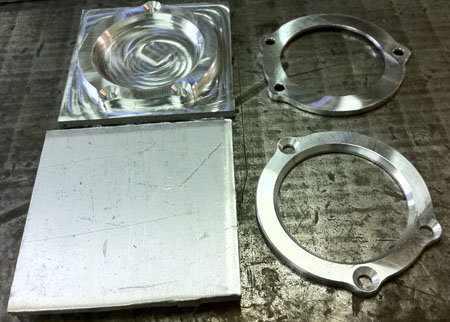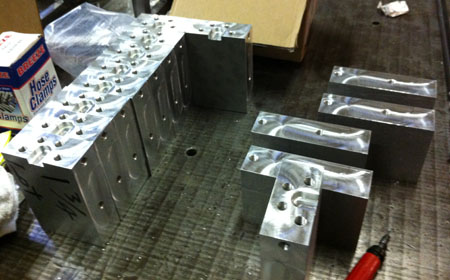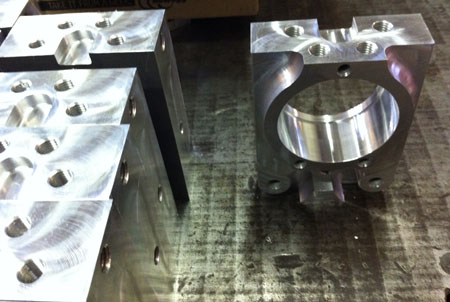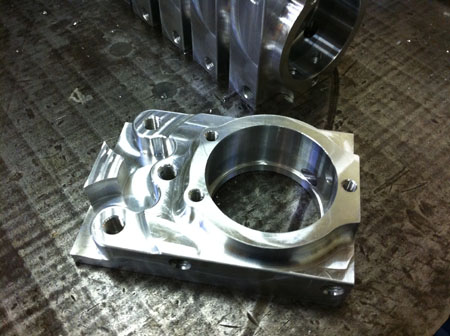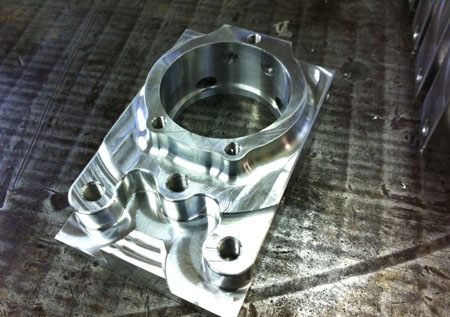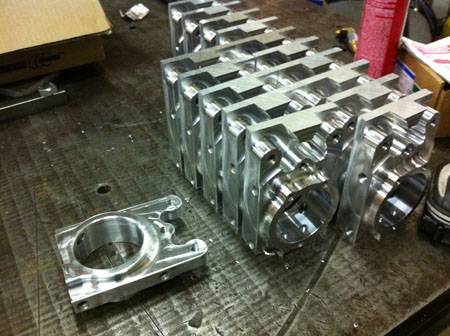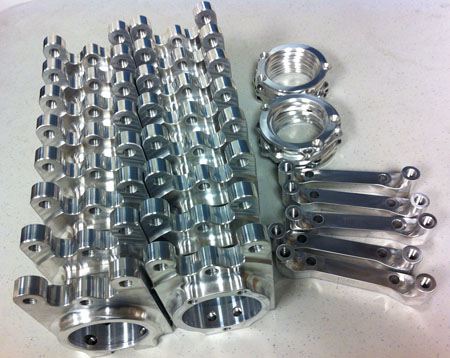|
04/02/12 A follow up on the machining. Now we are making our regular production parts and I'm continuing to learn the craft and the art of it. There is always a challenge of figuring out the size of material, how the part is going to be held in various orientations, what order the operations are done in, how to keep precise alignment from one op to the next, what tools and toolpath types to use and so on. Here are two examples: We are making a new batch of LT uprights which means making the upright base, the bearing retaining ring and the various adapters for custom configurations. I did the retaining rings first. A fairly simple part, only two operations the second being just face milling. But the part is also quite thin (only 0.2") and has an irregular shape so holding it securely is a bit of a trick. To add to the challenge, the material we received was just 1/2" plate that was not cut but sheared off with VERY rough edges. After a bit of thought I came up with a plan, designed and made the fixture to hold the part for the second op, and then cranked them out.
The upright bases are quite different. The material came saw-cut so the edges are fairly reasonable. The part has 5 different operations because it has to be machined from 5 sides and all the features need to be aligned. As each operation is performed the overall part gets smaller so the setups need to take that into account for proper indexing. The bearing bore has a +/-0.0005" tolerance on the diameter. On the plus side it can all be done in the vise without the need for special fixturing.
It took about a calendar week to get the 16 uprights done, three days of which was actual machining. I'm continually trying new things and improving both my methods and our arsenal of tools. Successive jobs get progressively quicker and more efficient. With everything I've learned from this batch I can now go back to the Elise uprights and make changes that will both speed up the machining and make it easier on the machine and the tools. When we first got the CNC, Kyle (one of our vendors) told me that machining my own parts will make me a better designer. This is proving to be very much the case. I've always tried to keep manufacturability in mind when designing parts but now, with direct experience in what it really takes, I can do that much more effectively. So yes, part of the process is tweaking the part designs as I go along to make them more efficient. The upside of having to do both jobs is being able to do both of them better. |
